How to Start Composting: 18 Tips and Tricks
-
Pete Ortiz
- Last updated:
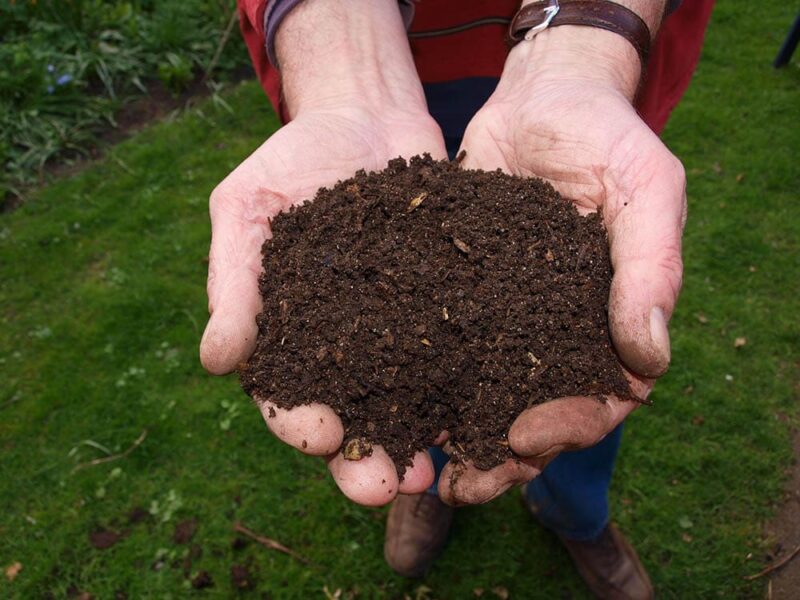
Compost is decomposed organic matter and can include everything from kitchen scraps to grass cuttings. A well-developed compost is added to soil to provide essential nutrients that help plants grow faster and healthier, and rather than having to buy a steady supply of compost, it is relatively easy to start a compost pile or compost bin of your own.
However, for the best results, you do need to ensure that the compost has the right moisture, warmth, and nitrogen ratios.
Below are 18 tips to help you start and continue to develop a nutrient-rich compost that can be great for gardens and planters.
The 18 Tips to Start Composting
1. Choose Your Compost Container
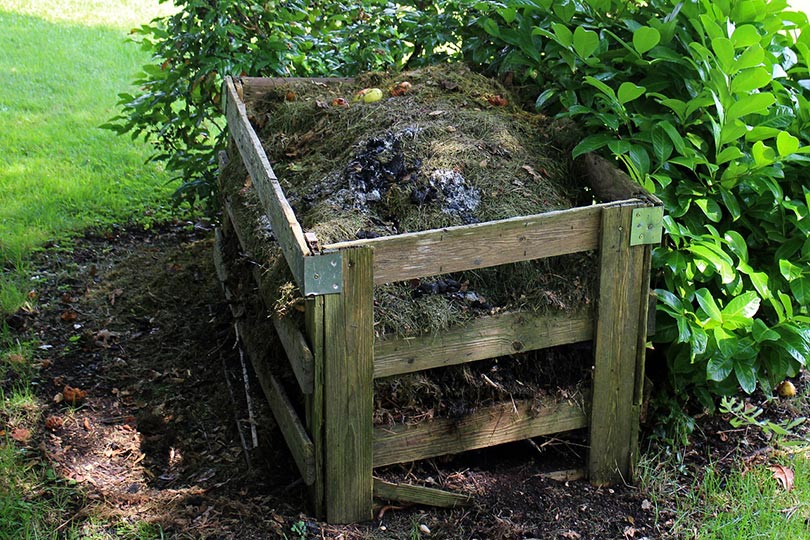
Using a compost bin or other type of container lets you maintain a compost pile while ensuring it doesn’t spread out and take over a corner of the garden, whereas having an unrestricted compost pile allows good airflow and makes it easier to regularly turn the compost.
If you have space and an area of the garden you can dedicate to compost, set up a pile. Otherwise, you can make your own compost container out of old pallets or pieces of wood. There are also many commercial compost bins available that will do the job.
2. Have Two Composts on the Go

There are several benefits to having two compost bins on the go. You can use one for the collection and initial breaking down of new compost and a second for the mixing of the finished compost. Smaller batches also mean that the compost will mature more quickly and be ready for use sooner.
The downside to having two compost bins is that it will take more management, swapping compost from one bin to another, and may require more room than having a single one.
3. Add Branches at the Bottom

Add a layer of branches to the bottom of a new compost pile. This allows for the circulation of air and creates an aerobic environment. This can help reduce the aroma of your compost.
Aerobic composting also releases less methane than anaerobic, while producing carbon dioxide instead so it is better for the environment. It also makes it easier to manage moisture levels, which can be difficult to control if you have a dense, compact compost pile.
4. Start With Old Soil or Compost

The decomposition of organic material is driven by bacteria and microorganisms, which are readily available in the soil and other compost. You can add a reasonable amount of healthy soil or compost to your new compost bin to give it a real kickstart and help boost the decomposition rate.
5. Collect Food Scraps
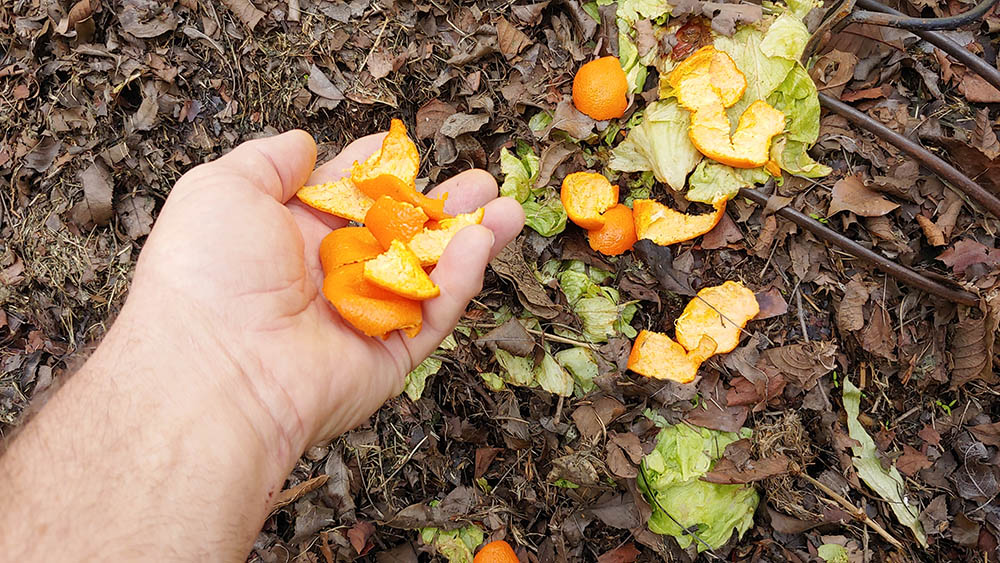
Kitchen waste can be a good source of green compost material and most houses produce a large amount regularly, so you can have a steady supply of compostable material.
Have some kind of container in your kitchen to collect appropriate scraps, but don’t use everything from the kitchen. For example, you should avoid adding fat and animal remains because these can attract pests and encourage bad smells in your compost.
6. Add Coffee Grounds
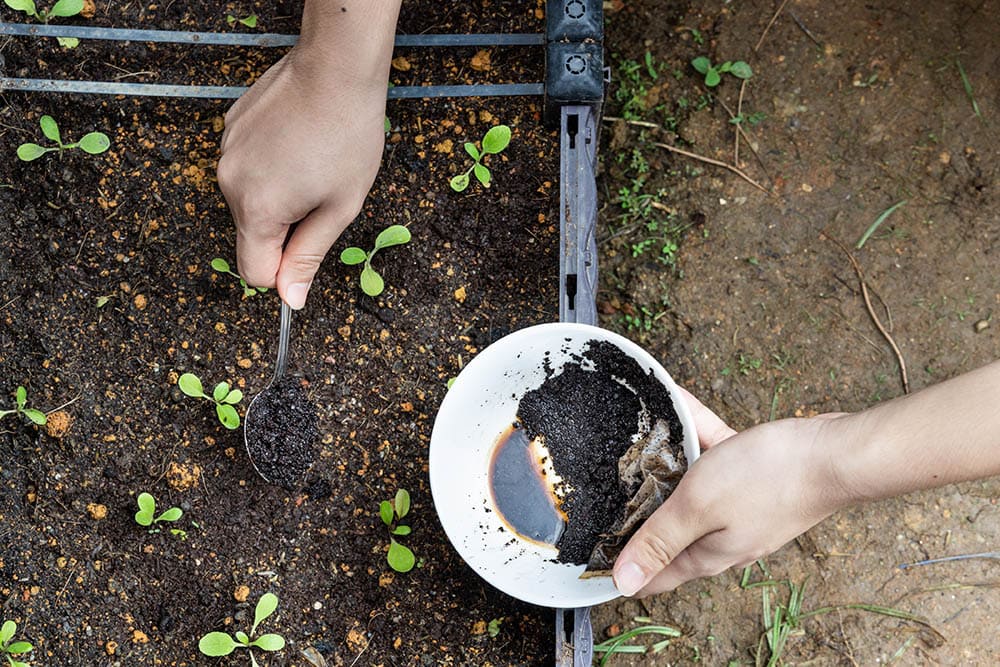
Occasionally add some coffee grounds to your compost. Worms love coffee grounds. The fine, abrasive texture of the grounds helps digest food in the worm’s stomach, which is important to them because they don’t have teeth to do the grinding.
Worms play an important role in composting because they break up large debris, and they also aerate the compost by burrowing holes into the scraps. However, if you’re a regular coffee drinker, you should avoid adding them every day because too much coffee grounds can cause the pile to become too acidic.
Add coffee grounds once or twice a week and ensure that you add plenty of other ingredients to balance the pH levels.
7. Add Worms

Coffee grounds will encourage worms, but you can take matters into your own hands and add worms yourself. Dig them up from the garden or buy them and add them to the compost.
8. Crush Egg Shells
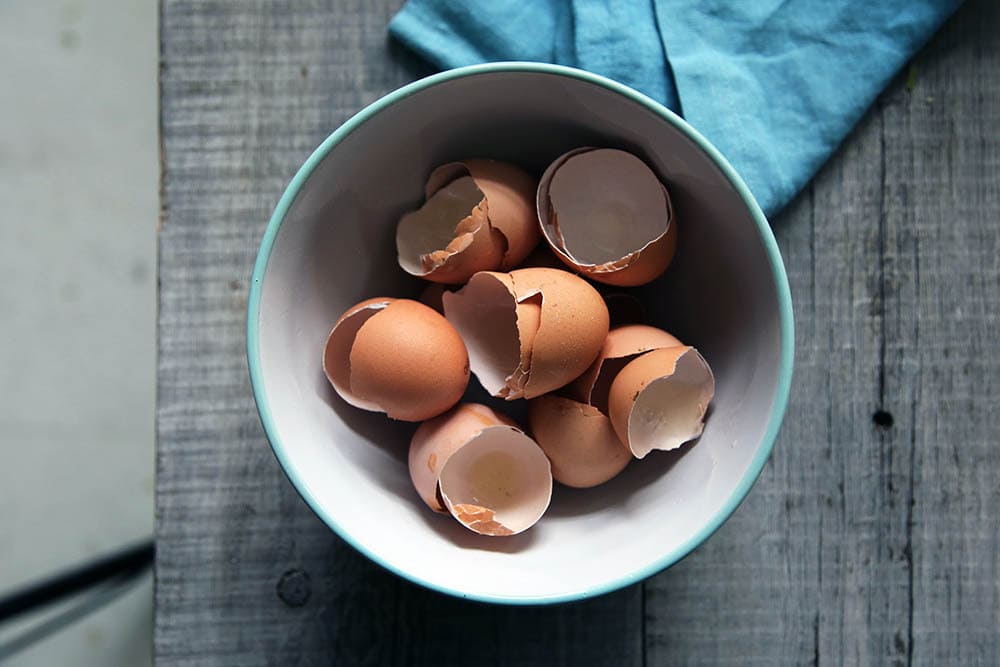
Not only can you add eggshells to your compost, but they are a highly beneficial source of calcium. Before adding them, crush the eggshells, or even put them through the blender to ensure that they break down more easily.
9. Make Compost Nutrient Smoothies
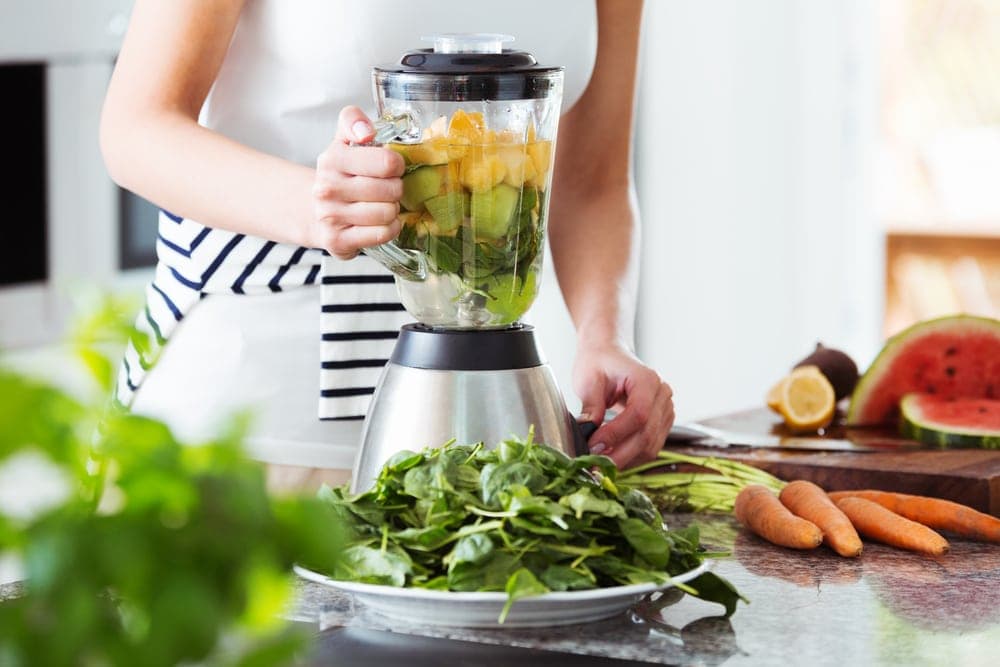
When you do put eggshells in a blender, add some vegetable scraps and even old tea bags. Blend them all up with a little water and then pour the resulting concoction over your compost pile. This will help add moisture and it will provide the nutrients that the pile needs to properly decompose.
10. One-Third Green, Two-Thirds Brown

Managing a compost pile means balancing the ratio of nitrogen to carbon, and this is achieved primarily through the addition of the right compost ingredients.
Brown compost is carbon-rich and includes paper, cardboard, and prunings from the garden. Nitrogen-rich ingredients are called green compost, and these include grass clippings and kitchen waste. To maintain good nutrient levels, you should aim for a ratio of one-third green compost to two-thirds brown compost.
11. Greens Can Speed Up a Slow Compost
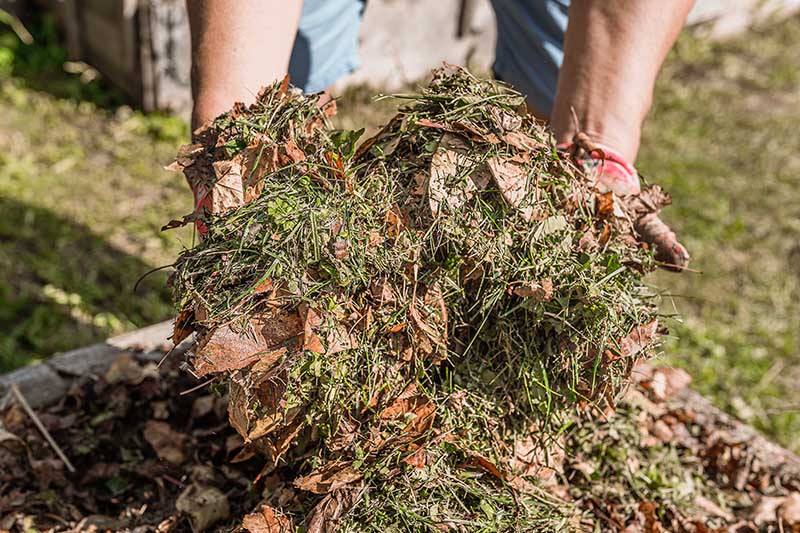
If your compost is decomposing slowly, you likely have too high a level of carbon or too much brown compost. Try adding more green compost. Mow the lawn and put the clippings on the compost. Leave it for a couple of days and see if the process has sped up.
12. Remove Inorganic Materials
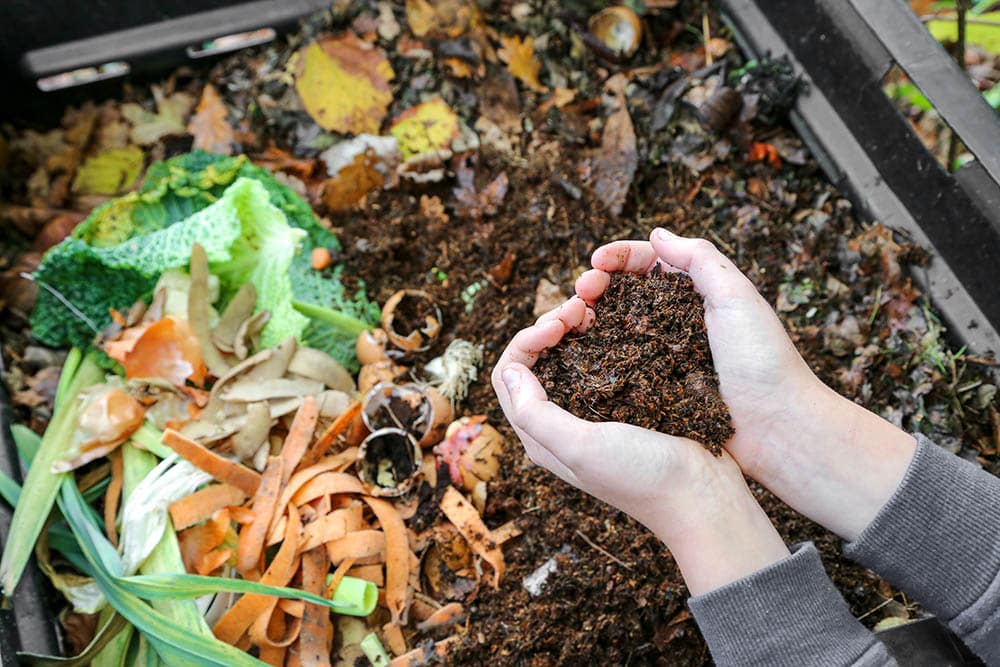
Whether you’re adding cardboard boxes or leftover fruit and vegetables, you should ensure that you remove any inorganic materials from the items before adding them. This can include plastic stickers and any non-paper labels that are found on them.
13. Monitor Fungi Growth

Not only is some fungus growth acceptable in a compost pile, but it is also beneficial. However, too much fungi, or the wrong types of fungi, which can be toxic, can be bad for your compost. If your compost is being overrun by fungi, it is likely a sign that you have too much brown compost. Aerate the pile, typically by turning it and by loosening it up, and then increase the amount of green compost you have.
14. Maintain Moisture Levels
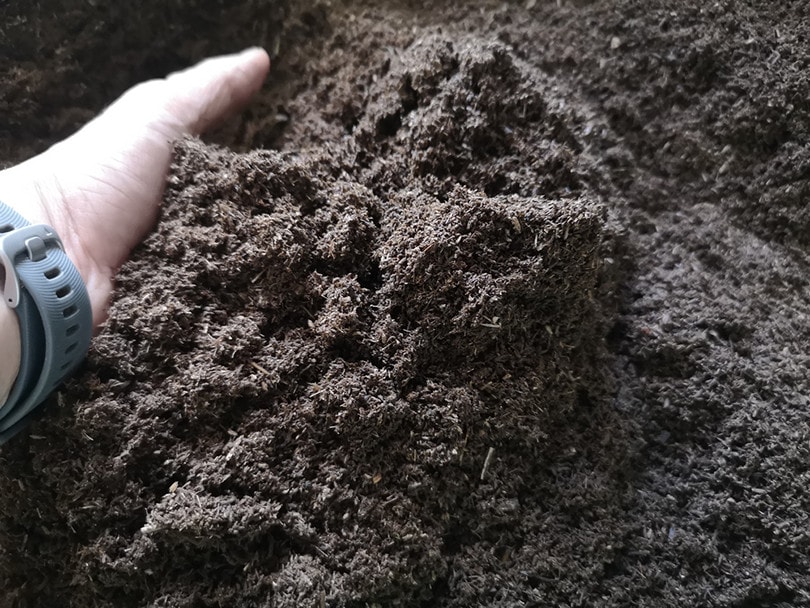
Your compost pile should have a moisture level of approximately 61%. This ensures that materials can break down easily and it also allows the compost pile temperature to increase to a desirable level.
You can buy equipment to monitor moisture levels, but if you don’t have the equipment, grab a handful of the compost and squeeze it in your hand. It should have a similar consistency to a wrung sponge. If the pile is too dry, water it or increase moisture using wet compost ingredients. If the pile is too wet, add more brown compost.
15. Use More Than Kitchen Scraps

Clothes that are made from natural materials, like cotton, can be added as brown compost, but you do need to cut the clothing up to ensure that it has the best opportunity of breaking down. Avoid adding polyester.
You can also add materials like kitchen towels and shredded paper. These can be a very good source of brown compost that will help dry out a wet compost pile and provide carbon to ensure the right nutrient ratio.
16. Chop Materials Up
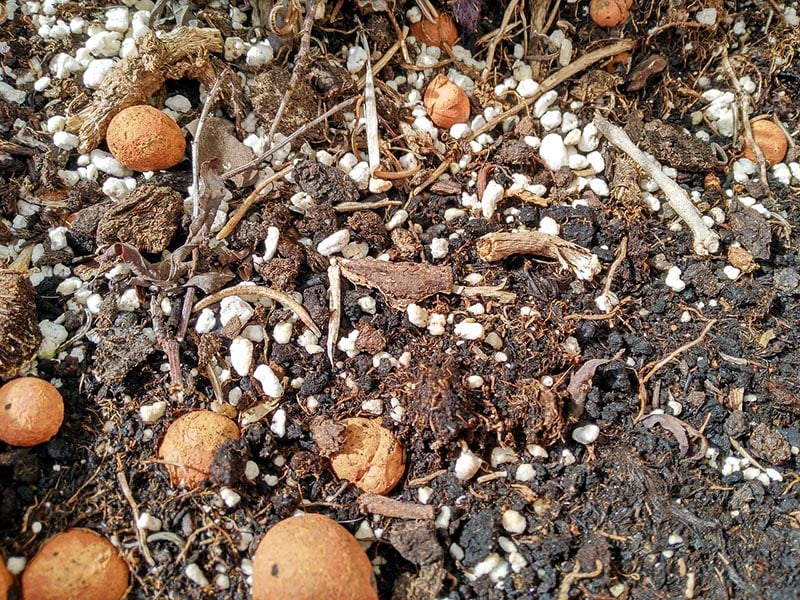
Whenever you put anything in the compost, you should ensure that it is suitably broken down. The greater the surface area of the compost items, the quicker and more efficiently those items can break down.
Chopping and grinding the materials down also enables air to circulate through the compost, which is also beneficial for a healthy compost pile.
17. Water and Turn Your Compost Pile
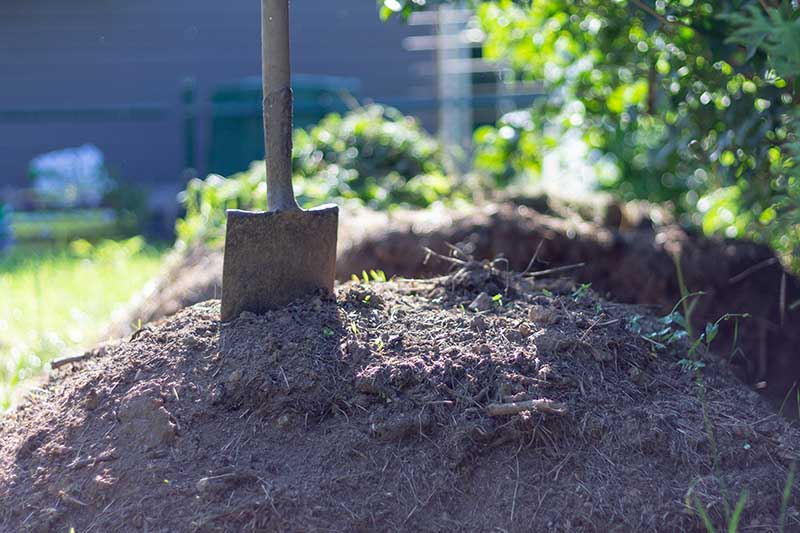
A compost pile needs some moisture to be effective, and if yours is too dry, it will compost very slowly, if at all. This can be especially problematic during the hot summer months.
The simplest way to add moisture is to water the compost. Alternatively, you can create a mix of water, kitchen scraps, tea bags, and crushed eggshells, and then add the moist mixture to the compost.
18. Use Your Compost Liberally
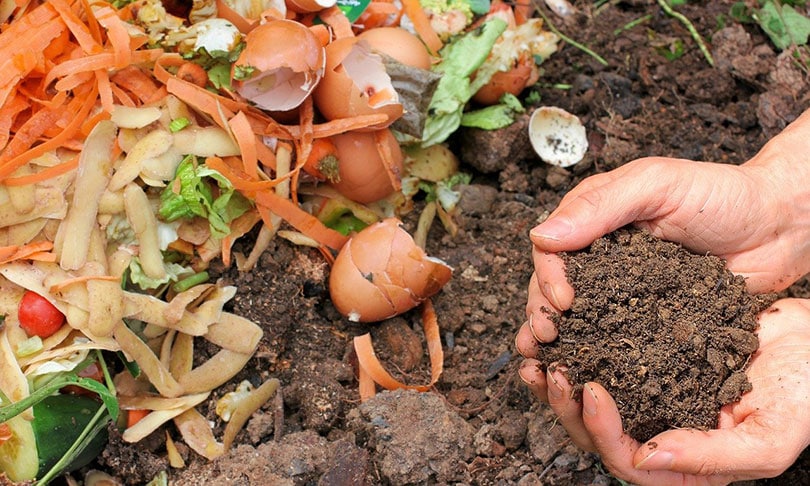
When your compost is ready and it has been allowed to mature, don’t be afraid to use it. As long as the compost is good quality, you can add it directly to borders, mix it with the topsoil to introduce more nutrients to the growing medium, and use it in pots and planters. You can also use a little to kickstart your next compost pile.
What Should You Not Put in Compost?
You should not put animal waste, animal matter, or fat in compost. You should avoid putting anything toxic in the pile, especially if you will use the resulting compost in your vegetable or herb garden.
Should Compost Bins Be in the Sun or Shade?
Avoid putting the compost somewhere where it will be exposed to extreme temperatures and try to find somewhere with a constant level of shade. Typically, compost bins and piles are found in the corners of gardens where they can enjoy the shade and where they are out of the way of the house.
How Often Should Compost Be Turned?
Turning compost introduces air and helps the decomposition process. As the name suggests, it requires the turning over of the compost pile and is usually done with a garden fork or spade. Generally, you should try to turn your compost every month or so.
How Long Does It Take for Compost to Break Down?
It can take anywhere from a few weeks to a year for compost to break down and be in a usable state. How long it takes depends on the type of composting method, the materials that are being composted, and factors like moisture and carbon and nitrogen levels in the compost material.
Conclusion
Having your own compost not only negates the need to buy commercial compost, but it allows you to control what is in your compost mix while also preventing the need to send scraps and other waste to landfill. It is a rewarding activity with demonstrable results, namely in the shape of healthier plants and more effective growing conditions.
Featured Image Credit: jokevanderleij8. Pixabay
Contents


